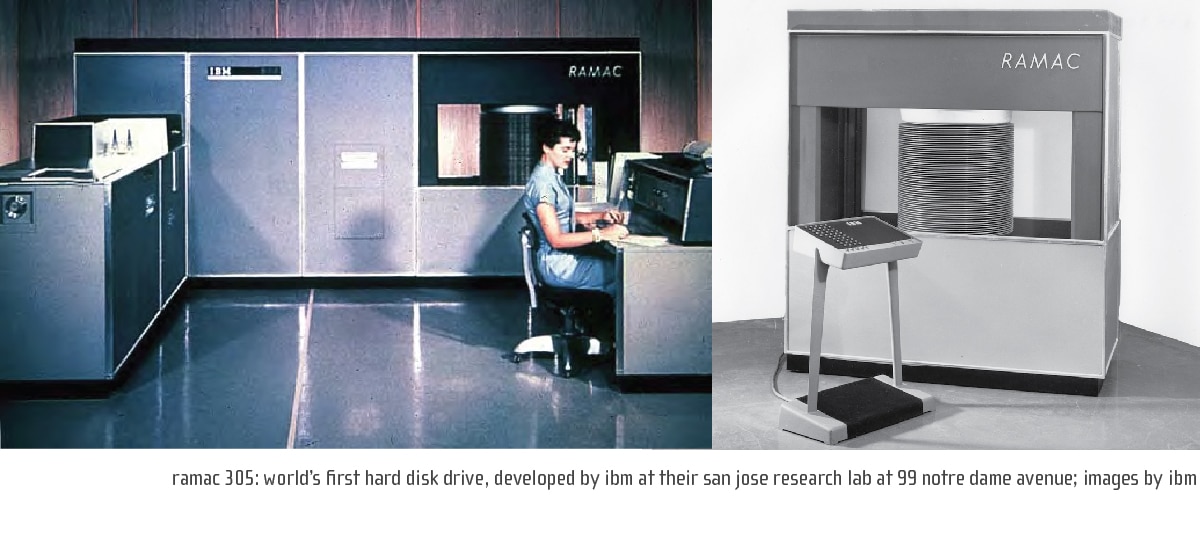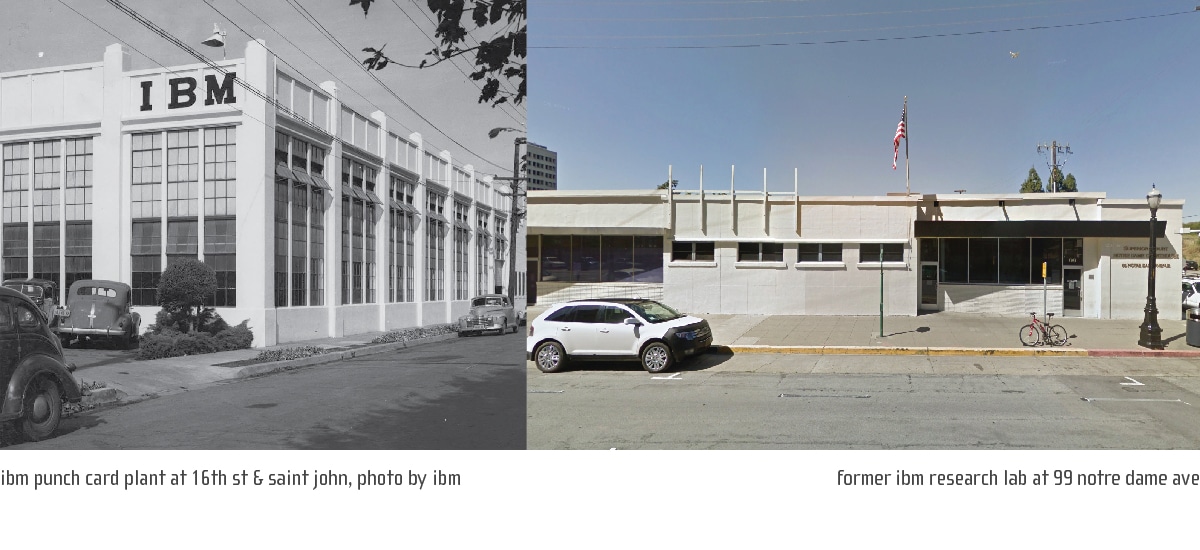ibm started operating a punch card plant in downtown san jose in 1943 (at 16th st and saint john st), becoming one of the first technology based businesses in santa clara county. consequently, ibm opened a small research laboratory close by on 99 notre dame street in 1951. four years later, this research laboratory made history by developing ramac – the world’s first magnetic disk drive. this device revolutionized computing by allowing rapid access to large amount of stored data.
at the time of ramac’s development, data were read back from a storage device via punch cards, since monitors had not yet been invented. the paving pattern at the brt station shows the first four messages ever read back from ramac, outputted onto punch cards. as the increasing errors on the cards show, the integrity of the data in this first test deteriorated from card to card. nonetheless, the development of this technology laid the foundation of mass data storage: to this date, it is the only successful economic approach to mass data storage.
in the first 50 years following its invention, disk area storage density increased by a factor of 100 million, however the basic technological principles remain the same as on the ramac.
information provided by dave bennet and dag spicer at the computer history museum in mountain view, ca







